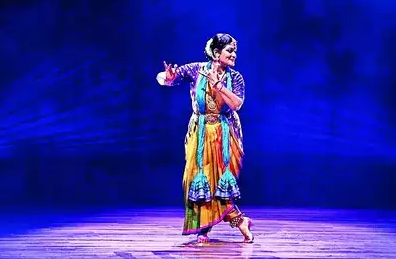
“Samagati”: Geeta Chandran Unveils Dance Tribute to Sanatana Dharma at Madras Music Academy
Chennai: In a captivating exploration of Sanatana Dharma and environmental conservation, choreographer Geeta Chandran is set to present “Samagati” at the Madras Music Academy on Monday. This dance performance, crafted by the Natya Vriksha Dance Collective, delves into the timeless principles of dharma, artha, kaama, and moksha, beginning at 7.45 pm.
Described as a Nritya Stuti, an ode to Lord Shiva embodying the five elements of creation, “Samagati” promises a unique visual interpretation of these foundational principles.
Geeta Chandran shared her inspiration, stating, “I read a lot and like interpreting whatever concept I learn through dance. That’s how I stumbled upon the principles of Sanatana Dharma. What I found interesting is that it is relevant even in today’s modern world. While most of the principles in Sanatana could be produced as abstract pieces of art, I noticed that only these four principles could be interpreted with dance, and so began working on it.”
When asked if the performance was influenced by recent discussions on Sanatana Dharma, she clarified, “I stay away from what’s trending as much as possible and do only what I feel resonates with me and my art.”
“Samagati”: A Synthesis of Principles
The Sanskrit word “Samagati” translates to ‘coming together,’ ‘union,’ and ‘progressing together.’ Geeta Chandran emphasized the uniqueness of “Samagati” as it combines the four principles of Sanatana as four distinct compositions. Each principle is woven into the choreography with a diverse approach and visual interpretation.
Exploring the themes, Geeta elaborated, “Dharma will focus on how we need to actively work on saving our planet and its resources for future generations. Through jathiswaram (pure nritta), artha will use infinity as a metaphor to symbolize perseverance. Using Muthuswami Dikshitar’s composition, kaama tries to showcase how it can either liberate or completely engulf you. The last composition, moksha, uses raas leela to symbolize peace.”
Reflecting on the varied interpretations that emerged during rehearsals, Geeta expressed curiosity about the audience’s response, saying, “The performance has been interpreted in so many different ways without even us intending to curate it that way. Seeing the audience come up with such spellbinding interpretations, I’m curious to see what Chennai has to say about the performance.”
